THE EDUCATIONAL SYSTEM OF THE USA AND CANADA

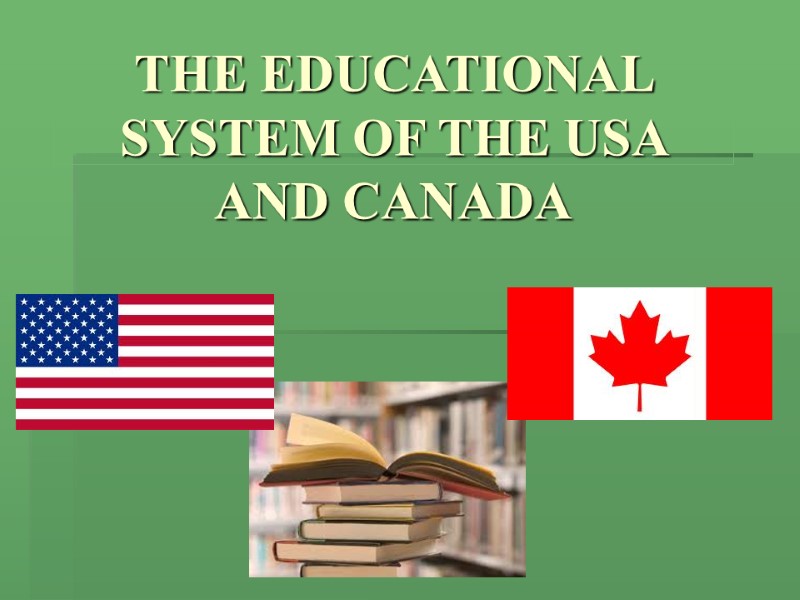
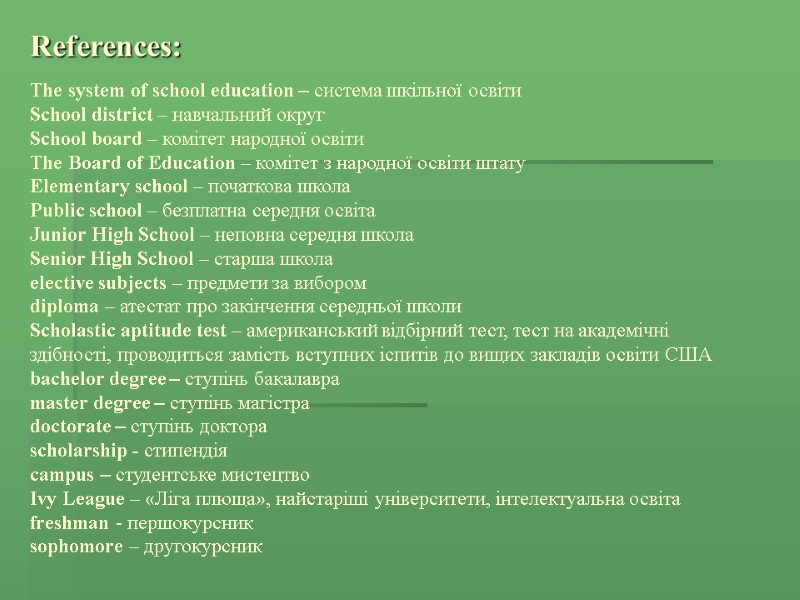
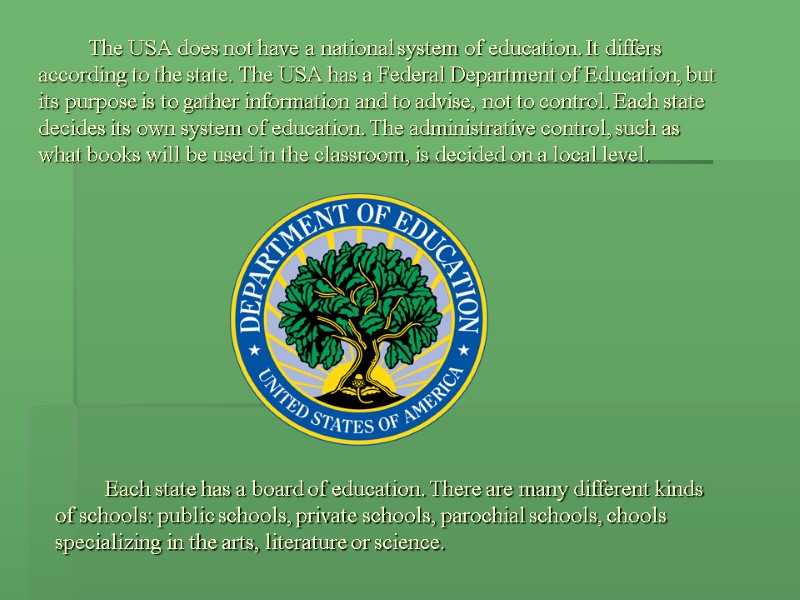

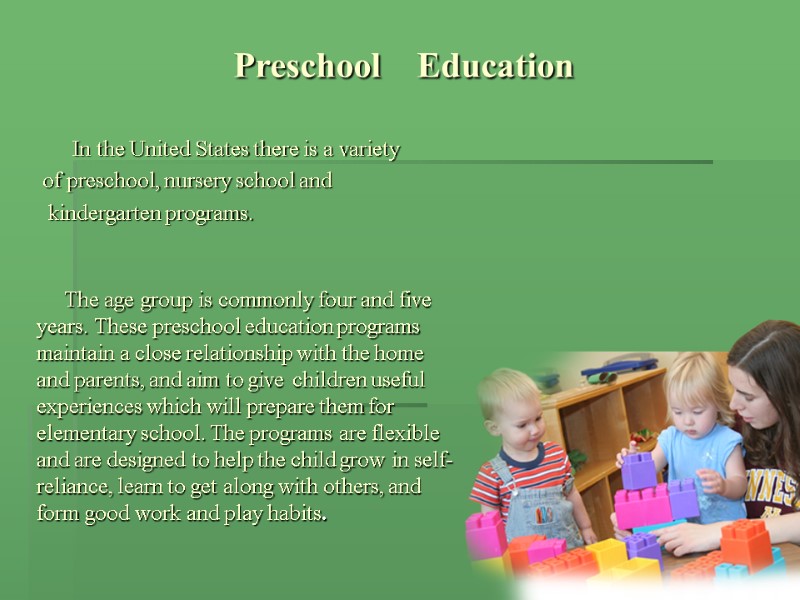
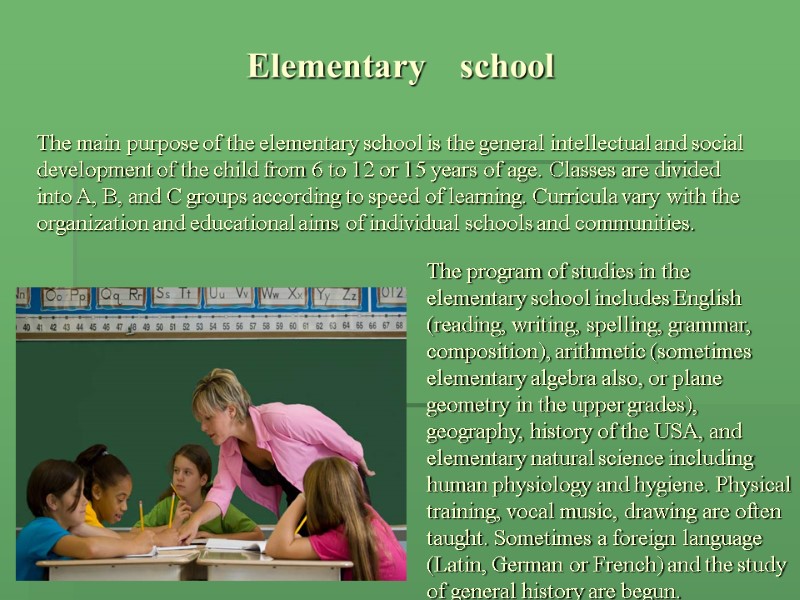
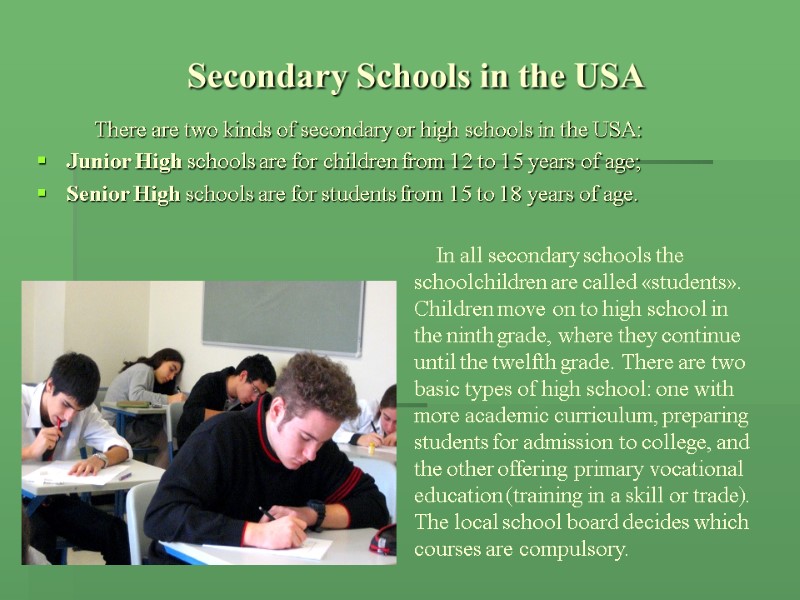
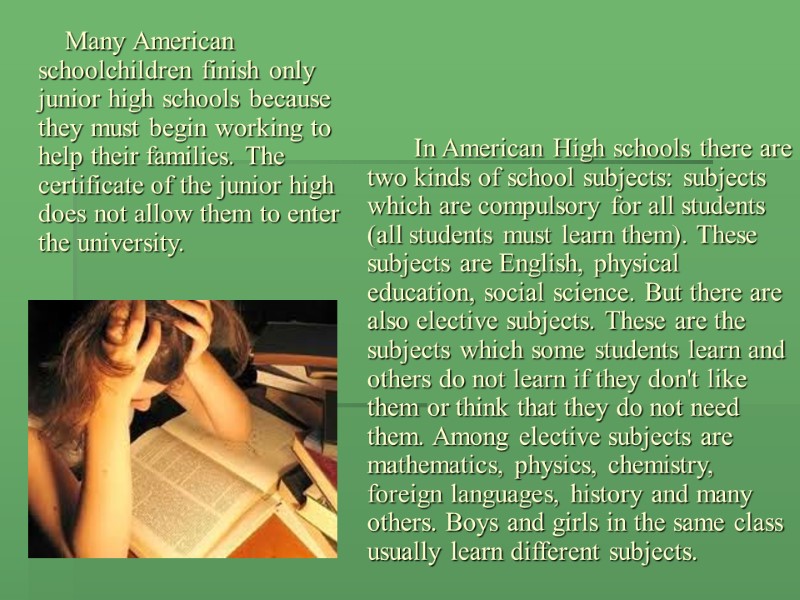
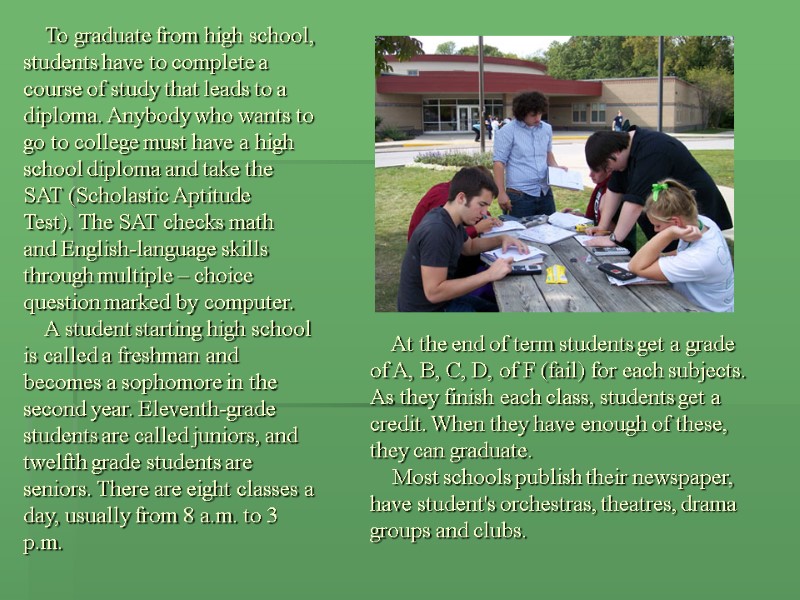


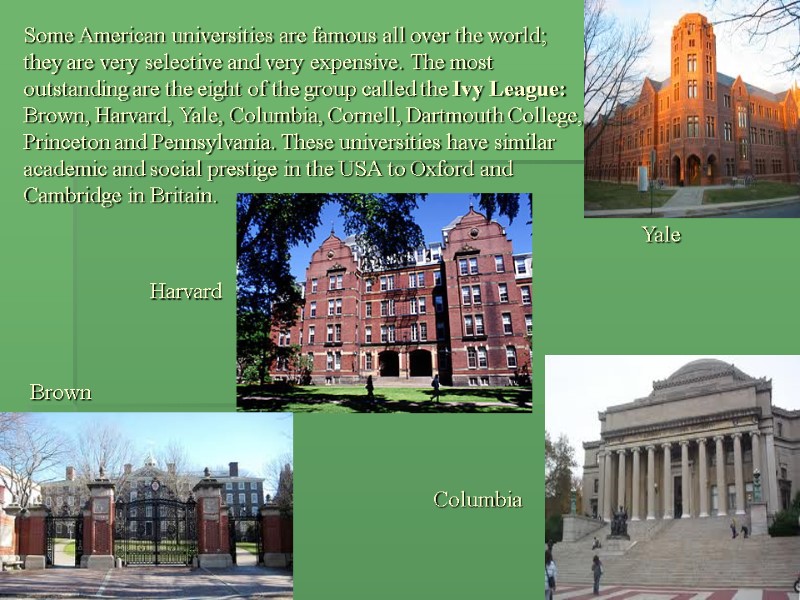
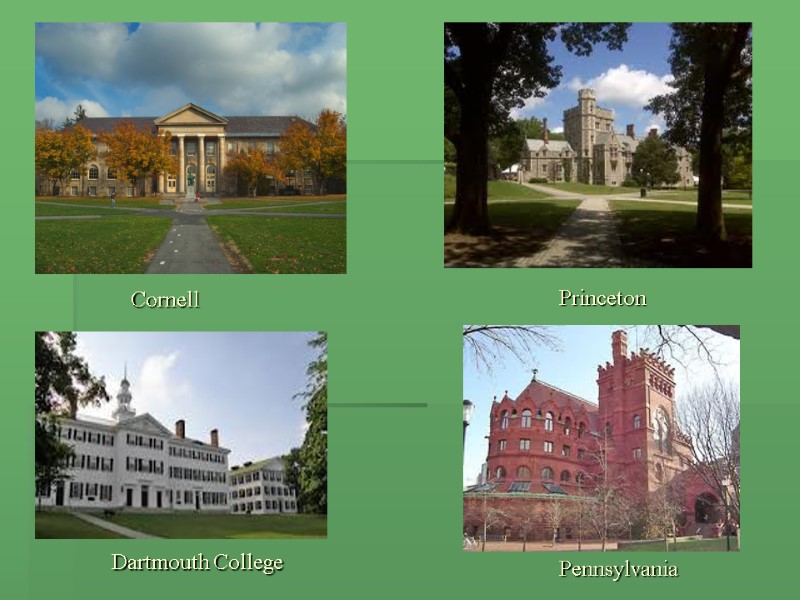
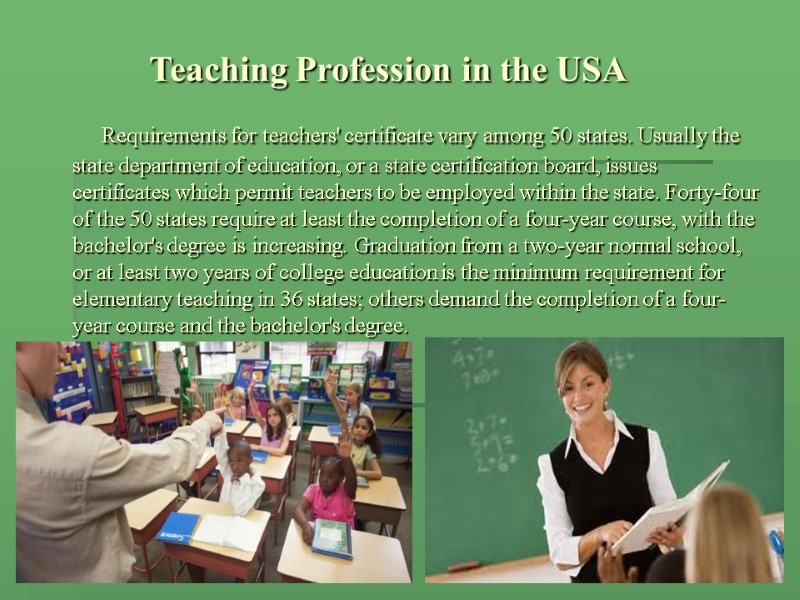
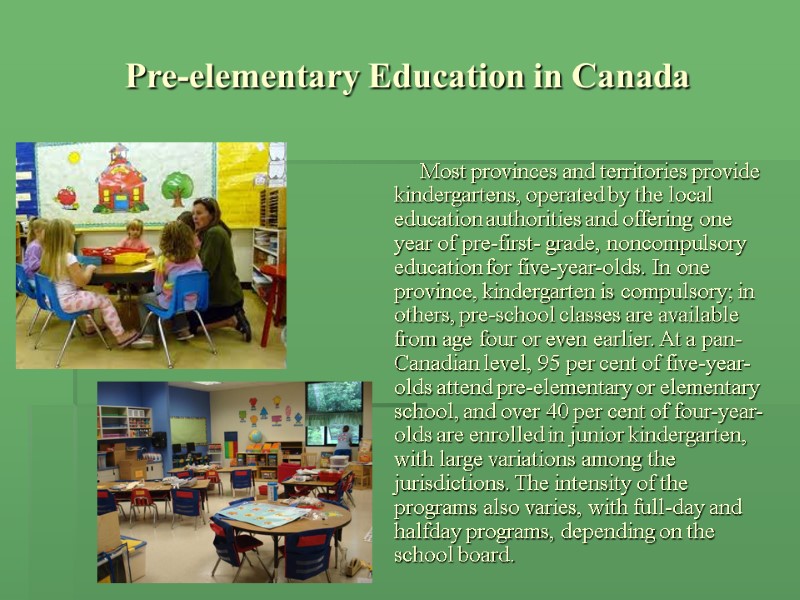
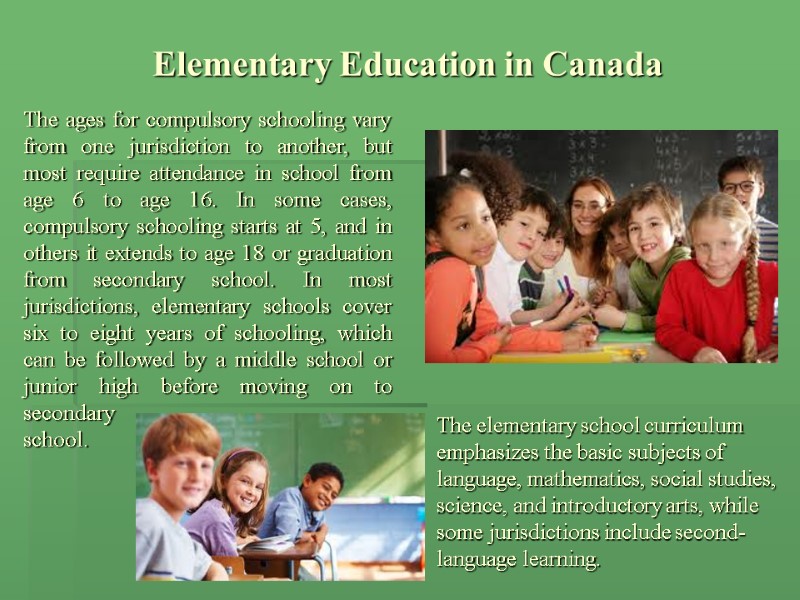
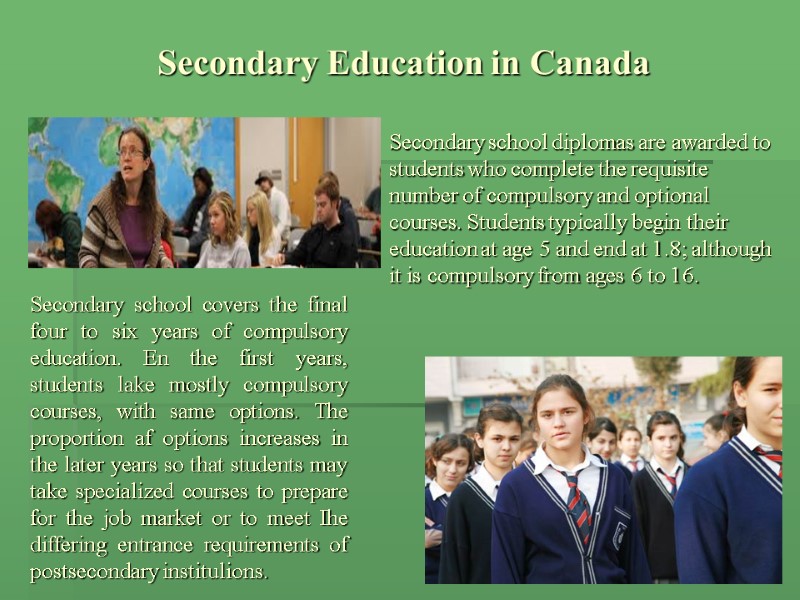
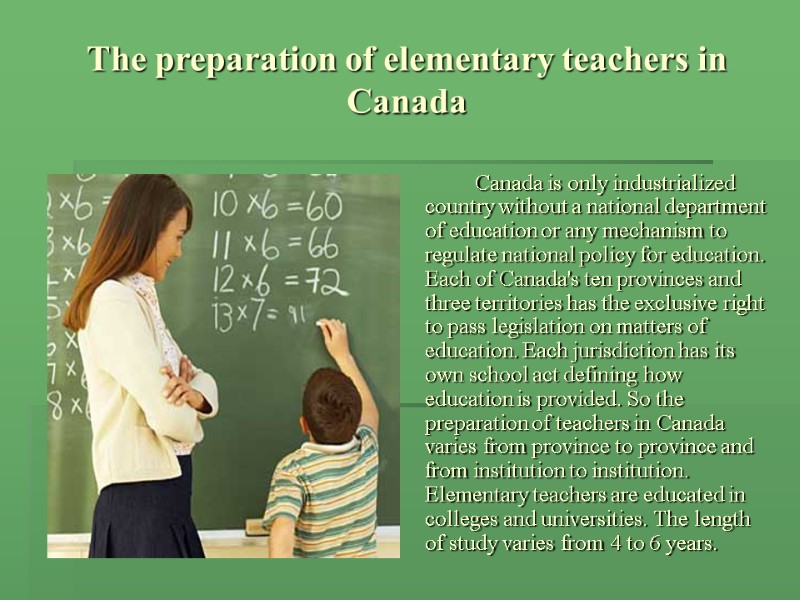


9872-the_educational_system_of_the_usa_and_canada.ppt
- Количество слайдов: 20
 THE EDUCATIONAL SYSTEM OF THE USA AND CANADA
THE EDUCATIONAL SYSTEM OF THE USA AND CANADA
 References: The system of school education – система шкільної освіти School district – навчальний округ School board – комітет народної освіти The Board of Education – комітет з народної освіти штату Elementary school – початкова школа Public school – безплатна середня освіта Junior High School – неповна середня школа Senior High School – старша школа elective subjects – предмети за вибором diploma – атестат про закінчення середньої школи Scholastic aptitude test – американський відбірний тест, тест на академічні здібності, проводиться замість вступних іспитів до вищих закладів освіти США bachelor degree – ступінь бакалавра master degree – ступінь магістра doctorate – ступінь доктора scholarship - стипендія campus – студентське мистецтво Ivy League – «Ліга плюща», найстаріші університети, інтелектуальна освіта freshman - першокурсник sophomore – другокурсник
References: The system of school education – система шкільної освіти School district – навчальний округ School board – комітет народної освіти The Board of Education – комітет з народної освіти штату Elementary school – початкова школа Public school – безплатна середня освіта Junior High School – неповна середня школа Senior High School – старша школа elective subjects – предмети за вибором diploma – атестат про закінчення середньої школи Scholastic aptitude test – американський відбірний тест, тест на академічні здібності, проводиться замість вступних іспитів до вищих закладів освіти США bachelor degree – ступінь бакалавра master degree – ступінь магістра doctorate – ступінь доктора scholarship - стипендія campus – студентське мистецтво Ivy League – «Ліга плюща», найстаріші університети, інтелектуальна освіта freshman - першокурсник sophomore – другокурсник
 The USA does not have a national system of education. It differs according to the state. The USA has a Federal Department of Education, but its purpose is to gather information and to advise, not to control. Each state decides its own system of education. The administrative control, such as what books will be used in the classroom, is decided on a local level. Each state has a board of education. There are many different kinds of schools: public schools, private schools, parochial schools, chools specializing in the arts, literature or science.
The USA does not have a national system of education. It differs according to the state. The USA has a Federal Department of Education, but its purpose is to gather information and to advise, not to control. Each state decides its own system of education. The administrative control, such as what books will be used in the classroom, is decided on a local level. Each state has a board of education. There are many different kinds of schools: public schools, private schools, parochial schools, chools specializing in the arts, literature or science.
 Education in the USA comprises three basic levels: elementary; secondary; higher education. It is free and compulsory in all states from the age of 6 till 16 (or 18). The vast majority of students at the primary and secondary levels go to public schools. The school year is usually nine mouths, from early September to mid June. The United States have the shortest school year in the world, an average of 180 days, compared with 220 to 240 days in most other lands. Extra -curricular activity (such as playing for one of the school's sports teams) is also very important in the American school system and is taken into consideration by colleges and employers.
Education in the USA comprises three basic levels: elementary; secondary; higher education. It is free and compulsory in all states from the age of 6 till 16 (or 18). The vast majority of students at the primary and secondary levels go to public schools. The school year is usually nine mouths, from early September to mid June. The United States have the shortest school year in the world, an average of 180 days, compared with 220 to 240 days in most other lands. Extra -curricular activity (such as playing for one of the school's sports teams) is also very important in the American school system and is taken into consideration by colleges and employers.
 Preschool Education In the United States there is a variety of preschool, nursery school and kindergarten programs. The age group is commonly four and five years. These preschool education programs maintain a close relationship with the home and parents, and aim to give children useful experiences which will prepare them for elementary school. The programs are flexible and are designed to help the child grow in self-reliance, learn to get along with others, and form good work and play habits.
Preschool Education In the United States there is a variety of preschool, nursery school and kindergarten programs. The age group is commonly four and five years. These preschool education programs maintain a close relationship with the home and parents, and aim to give children useful experiences which will prepare them for elementary school. The programs are flexible and are designed to help the child grow in self-reliance, learn to get along with others, and form good work and play habits.
 Elementary school The main purpose of the elementary school is the general intellectual and social development of the child from 6 to 12 or 15 years of age. Classes are divided into A, B, and C groups according to speed of learning. Curricula vary with the organization and educational aims of individual schools and communities. The program of studies in the elementary school includes English (reading, writing, spelling, grammar, composition), arithmetic (sometimes elementary algebra also, or plane geometry in the upper grades), geography, history of the USA, and elementary natural science including human physiology and hygiene. Physical training, vocal music, drawing are often taught. Sometimes a foreign language (Latin, German or French) and the study of general history are begun.
Elementary school The main purpose of the elementary school is the general intellectual and social development of the child from 6 to 12 or 15 years of age. Classes are divided into A, B, and C groups according to speed of learning. Curricula vary with the organization and educational aims of individual schools and communities. The program of studies in the elementary school includes English (reading, writing, spelling, grammar, composition), arithmetic (sometimes elementary algebra also, or plane geometry in the upper grades), geography, history of the USA, and elementary natural science including human physiology and hygiene. Physical training, vocal music, drawing are often taught. Sometimes a foreign language (Latin, German or French) and the study of general history are begun.
 Secondary Schools in the USA There are two kinds of secondary or high schools in the USA: Junior High schools are for children from 12 to 15 years of age; Senior High schools are for students from 15 to 18 years of age. In all secondary schools the schoolchildren are called «students». Children move on to high school in the ninth grade, where they continue until the twelfth grade. There are two basic types of high school: one with more academic curriculum, preparing students for admission to college, and the other offering primary vocational education (training in a skill or trade). The local school board decides which courses are compulsory.
Secondary Schools in the USA There are two kinds of secondary or high schools in the USA: Junior High schools are for children from 12 to 15 years of age; Senior High schools are for students from 15 to 18 years of age. In all secondary schools the schoolchildren are called «students». Children move on to high school in the ninth grade, where they continue until the twelfth grade. There are two basic types of high school: one with more academic curriculum, preparing students for admission to college, and the other offering primary vocational education (training in a skill or trade). The local school board decides which courses are compulsory.
 Many American schoolchildren finish only junior high schools because they must begin working to help their families. The certificate of the junior high does not allow them to enter the university. In American High schools there are two kinds of school subjects: subjects which are compulsory for all students (all students must learn them). These subjects are English, physical education, social science. But there are also elective subjects. These are the subjects which some students learn and others do not learn if they don't like them or think that they do not need them. Among elective subjects are mathematics, physics, chemistry, foreign languages, history and many others. Boys and girls in the same class usually learn different subjects.
Many American schoolchildren finish only junior high schools because they must begin working to help their families. The certificate of the junior high does not allow them to enter the university. In American High schools there are two kinds of school subjects: subjects which are compulsory for all students (all students must learn them). These subjects are English, physical education, social science. But there are also elective subjects. These are the subjects which some students learn and others do not learn if they don't like them or think that they do not need them. Among elective subjects are mathematics, physics, chemistry, foreign languages, history and many others. Boys and girls in the same class usually learn different subjects.
 To graduate from high school, students have to complete a course of study that leads to a diploma. Anybody who wants to go to college must have a high school diploma and take the SAT (Scholastic Aptitude Test). The SAT checks math and English-language skills through multiple – choice question marked by computer. A student starting high school is called a freshman and becomes a sophomore in the second year. Eleventh-grade students are called juniors, and twelfth grade students are seniors. There are eight classes a day, usually from 8 a.m. to 3 p.m. At the end of term students get a grade of A, B, C, D, of F (fail) for each subjects. As they finish each class, students get a credit. When they have enough of these, they can graduate. Most schools publish their newspaper, have student's orchestras, theatres, drama groups and clubs.
To graduate from high school, students have to complete a course of study that leads to a diploma. Anybody who wants to go to college must have a high school diploma and take the SAT (Scholastic Aptitude Test). The SAT checks math and English-language skills through multiple – choice question marked by computer. A student starting high school is called a freshman and becomes a sophomore in the second year. Eleventh-grade students are called juniors, and twelfth grade students are seniors. There are eight classes a day, usually from 8 a.m. to 3 p.m. At the end of term students get a grade of A, B, C, D, of F (fail) for each subjects. As they finish each class, students get a credit. When they have enough of these, they can graduate. Most schools publish their newspaper, have student's orchestras, theatres, drama groups and clubs.
 Higher Education in the USA After graduating from High School students may go on to attend a university or college where they specialize or "major" in a subject. Colleges and universities give bachelor degrees - after two years -master degrees - after four years - and doctorates after more study. Higher education is very expensive in private colleges and universities, but it is much cheaper in those supported by states and cities. Many students receive a scholl-airship from the university or have part-time jobs to help pay their expenses. American universities are set in a "campus", formed by buildings and green areas. Students may live in the campus, but may also go home in the evening. Most students do not live with their families, but rent an apartment together with friends.
Higher Education in the USA After graduating from High School students may go on to attend a university or college where they specialize or "major" in a subject. Colleges and universities give bachelor degrees - after two years -master degrees - after four years - and doctorates after more study. Higher education is very expensive in private colleges and universities, but it is much cheaper in those supported by states and cities. Many students receive a scholl-airship from the university or have part-time jobs to help pay their expenses. American universities are set in a "campus", formed by buildings and green areas. Students may live in the campus, but may also go home in the evening. Most students do not live with their families, but rent an apartment together with friends.

 Some American universities are famous all over the world; they are very selective and very expensive. The most outstanding are the eight of the group called the Ivy League: Brown, Harvard, Yale, Columbia, Cornell, Dartmouth College, Princeton and Pennsylvania. These universities have similar academic and social prestige in the USA to Oxford and Cambridge in Britain. Brown Harvard Yale Columbia
Some American universities are famous all over the world; they are very selective and very expensive. The most outstanding are the eight of the group called the Ivy League: Brown, Harvard, Yale, Columbia, Cornell, Dartmouth College, Princeton and Pennsylvania. These universities have similar academic and social prestige in the USA to Oxford and Cambridge in Britain. Brown Harvard Yale Columbia
 Cornell Dartmouth College Princeton Pennsylvania
Cornell Dartmouth College Princeton Pennsylvania
 Teaching Profession in the USA Requirements for teachers' certificate vary among 50 states. Usually the state department of education, or a state certification board, issues certificates which permit teachers to be employed within the state. Forty-four of the 50 states require at least the completion of a four-year course, with the bachelor's degree is increasing. Graduation from a two-year normal school, or at least two years of college education is the minimum requirement for elementary teaching in 36 states; others demand the completion of a four-year course and the bachelor's degree.
Teaching Profession in the USA Requirements for teachers' certificate vary among 50 states. Usually the state department of education, or a state certification board, issues certificates which permit teachers to be employed within the state. Forty-four of the 50 states require at least the completion of a four-year course, with the bachelor's degree is increasing. Graduation from a two-year normal school, or at least two years of college education is the minimum requirement for elementary teaching in 36 states; others demand the completion of a four-year course and the bachelor's degree.
 Pre-elementary Education in Canada Most provinces and territories provide kindergartens, operated by the local education authorities and offering one year of pre-first- grade, noncompulsory education for five-year-olds. In one province, kindergarten is compulsory; in others, pre-school classes are available from age four or even earlier. At a pan-Canadian level, 95 per cent of five-year-olds attend pre-elementary or elementary school, and over 40 per cent of four-year-olds are enrolled in junior kindergarten, with large variations among the jurisdictions. The intensity of the programs also varies, with full-day and halfday programs, depending on the school board.
Pre-elementary Education in Canada Most provinces and territories provide kindergartens, operated by the local education authorities and offering one year of pre-first- grade, noncompulsory education for five-year-olds. In one province, kindergarten is compulsory; in others, pre-school classes are available from age four or even earlier. At a pan-Canadian level, 95 per cent of five-year-olds attend pre-elementary or elementary school, and over 40 per cent of four-year-olds are enrolled in junior kindergarten, with large variations among the jurisdictions. The intensity of the programs also varies, with full-day and halfday programs, depending on the school board.
 Elementary Education in Canada The ages for compulsory schooling vary from one jurisdiction to another, but most require attendance in school from age 6 to age 16. In some cases, compulsory schooling starts at 5, and in others it extends to age 18 or graduation from secondary school. In most jurisdictions, elementary schools cover six to eight years of schooling, which can be followed by a middle school or junior high before moving on to secondary school. The elementary school curriculum emphasizes the basic subjects of language, mathematics, social studies, science, and introductory arts, while some jurisdictions include second-language learning.
Elementary Education in Canada The ages for compulsory schooling vary from one jurisdiction to another, but most require attendance in school from age 6 to age 16. In some cases, compulsory schooling starts at 5, and in others it extends to age 18 or graduation from secondary school. In most jurisdictions, elementary schools cover six to eight years of schooling, which can be followed by a middle school or junior high before moving on to secondary school. The elementary school curriculum emphasizes the basic subjects of language, mathematics, social studies, science, and introductory arts, while some jurisdictions include second-language learning.
 Secondary Education in Canada Secondary school covers the final four to six years of compulsory education. En the first years, students lake mostly compulsory courses, with same options. The proportion af options increases in the later years so that students may take specialized courses to prepare for the job market or to meet Ihe differing entrance requirements of postsecondary institulions. Secondary school diplomas are awarded to students who complete the requisite number of compulsory and optional courses. Students typically begin their education at age 5 and end at 1.8; although it is compulsory from ages 6 to 16.
Secondary Education in Canada Secondary school covers the final four to six years of compulsory education. En the first years, students lake mostly compulsory courses, with same options. The proportion af options increases in the later years so that students may take specialized courses to prepare for the job market or to meet Ihe differing entrance requirements of postsecondary institulions. Secondary school diplomas are awarded to students who complete the requisite number of compulsory and optional courses. Students typically begin their education at age 5 and end at 1.8; although it is compulsory from ages 6 to 16.
 The preparation of elementary teachers in Canada Canada is only industrialized country without a national department of education or any mechanism to regulate national policy for education. Each of Canada's ten provinces and three territories has the exclusive right to pass legislation on matters of education. Each jurisdiction has its own school act defining how education is provided. So the preparation of teachers in Canada varies from province to province and from institution to institution. Elementary teachers are educated in colleges and universities. The length of study varies from 4 to 6 years.
The preparation of elementary teachers in Canada Canada is only industrialized country without a national department of education or any mechanism to regulate national policy for education. Each of Canada's ten provinces and three territories has the exclusive right to pass legislation on matters of education. Each jurisdiction has its own school act defining how education is provided. So the preparation of teachers in Canada varies from province to province and from institution to institution. Elementary teachers are educated in colleges and universities. The length of study varies from 4 to 6 years.
 The Department of Elementary Education is committed to preparing teachers who are competent to teach all subjects and facilitate the learning of children ranging in age from four to 12 years in Kindergarten to Grade 6. The minimum qualification required to teach in an elementary school is four years of post-secondary education leading to a bachelor of education degree.
The Department of Elementary Education is committed to preparing teachers who are competent to teach all subjects and facilitate the learning of children ranging in age from four to 12 years in Kindergarten to Grade 6. The minimum qualification required to teach in an elementary school is four years of post-secondary education leading to a bachelor of education degree.
 THE END
THE END

